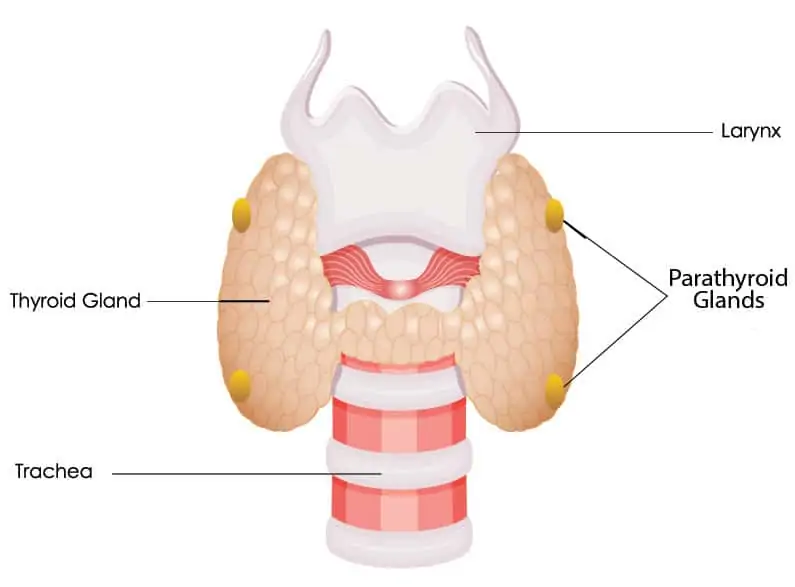The parathyroid glands are located in the neck behind the thyroid gland. They are responsible for the tight control of the calcium levels in your blood. Calcium is important for the normal functioning of the brain, heart, muscles, nerves, as well as the strength of your bones. Untreated hyperparathyroidism can cause serious long-term health problems.
Hyperparathyroidism is a condition where there is too much parathyroid hormone in the blood. It is very common, affecting about 1 in 100 people. It is two to three times more common in women, especially after menopause. It is usually due to 1 of the 4 parathyroid glands developing a benign tumour, which produces too much parathyroid hormone (PTH). Most of the time the condition is asymptomatic and is picked-up on a routine blood test.
Symptoms of hyperparathyroidism are often subtle and non-specific. They may include:
- mood disturbances
- tiredness
- memory problems
- thinning of the bones (osteoporosis) which can result in bone fractures
- abdominal pains
- irregular heart beat (arrhythmia)
- constipation
- high blood pressure
- kidney stones
The initial diagnosis can often be made with a simple blood test.
Surgery is the only effective treatment for hyperparathyroidism. There are no medications currently available that can cure primary hyperparathyroidism.
You can read a bit more about parathyroid glands, parathyroid conditions and surgery for parathyroid problems here.



